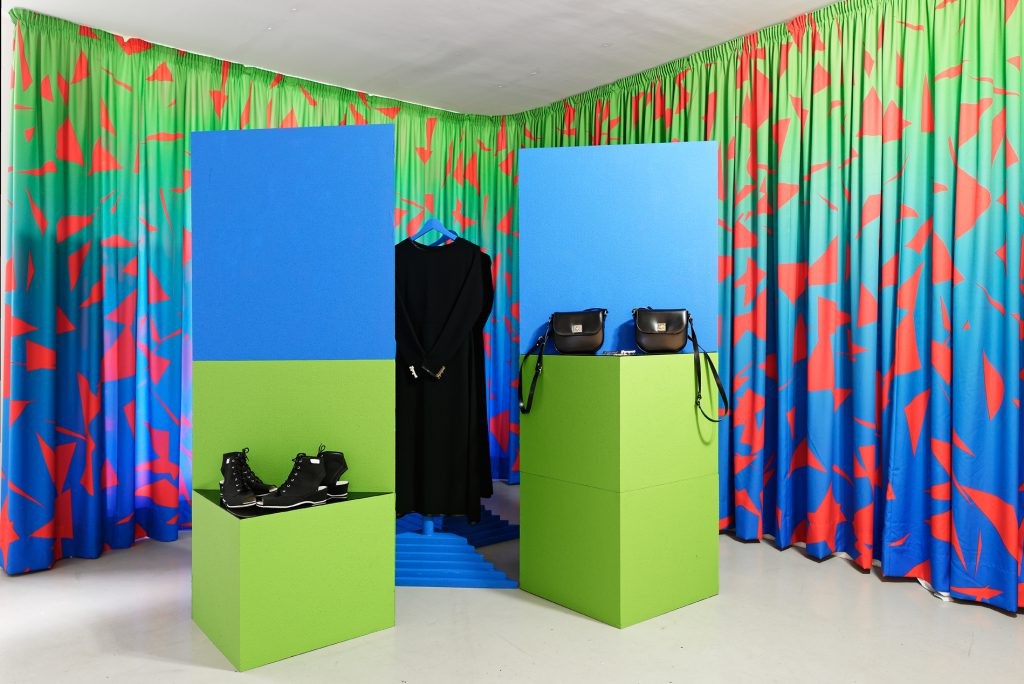Habits And Customs Of _______ Are So Different From Ours That We Visit Them With The Same Sentiment That We Visit Exhibitions
20 Feb - 30 Apr 2016
HABITS AND CUSTOMS OF _______ ARE SO DIFFERENT FROM OURS THAT WE VISIT THEM WITH THE SAME SENTIMENT THAT WE VISIT EXHIBITIONS
20 February – 30 April 2016
Curated by Biljana Ciric
Habits and customs of _______ are so different from ours that we visit them with the same sentiment that we visit exhibitions [fn]1. The title of the exhibition is borrowed from the book Voyages and Travels, in the years 1809, 1810, 1811 by John Galt, London: Printed for T. Cadell and W. Davies, 1812 [/fn]
While exhibitions are becoming more and more standardized products within the capitalist system, where the activation of the individual is weaker and thinner, what propositions can one offer to resist the consumerism logic? Art practitioners are pressured to produce constantly. What are the other forms of involvement within the art system? What does it mean to be an artist? Is art void, as artists may question in their work?
This exhibition and series of events explore models of working within the cracks of the art system, questioning its expectations, and parameters founded on geo-political stereotypes, and its image based art history.
Giving away light and embracing darkness as part of the everyday, brings into question our relation to the world through eye sensation. Is solidarity the gesture of giving away and gaining something at the same time? What kind of relationships and value systems are created then? How are the personal and the public being negotiated through exhibited objects, and how can these objects resist the consumerist gaze?
What kind of contemporaneities are these practices producing and how do they influence our social structures?
Number of works within the exhibition abandon the image and the visual, to confront their complex set of relationships to the mainstream narrative and archive creation. Other works question territories as fixed boundaries, proposing threads instead, by creating new knowledge. These individual practices from different localities, which initially lack interconnections—on different levels, through similar artistic positions, could complicate future art historical narratives. These practices could be understood as strategies of active withdrawal. Withdrawal as a way of staying away from the mainstream, and gaining autonomy; withdrawal as a two-way strategy that allows to go into the world and to leave it; withdrawal as a needed break, as a form of self-cultivation.
These issues unpack the perception of institutional structures that are constantly shaping us as subjects and the importance of the exhibition as a medium to re-imagine new encounters within the public sphere. It is through new rituals of exhibiting that new institutional models can be brought to life.
20 February – 30 April 2016
Curated by Biljana Ciric
Habits and customs of _______ are so different from ours that we visit them with the same sentiment that we visit exhibitions [fn]1. The title of the exhibition is borrowed from the book Voyages and Travels, in the years 1809, 1810, 1811 by John Galt, London: Printed for T. Cadell and W. Davies, 1812 [/fn]
While exhibitions are becoming more and more standardized products within the capitalist system, where the activation of the individual is weaker and thinner, what propositions can one offer to resist the consumerism logic? Art practitioners are pressured to produce constantly. What are the other forms of involvement within the art system? What does it mean to be an artist? Is art void, as artists may question in their work?
This exhibition and series of events explore models of working within the cracks of the art system, questioning its expectations, and parameters founded on geo-political stereotypes, and its image based art history.
Giving away light and embracing darkness as part of the everyday, brings into question our relation to the world through eye sensation. Is solidarity the gesture of giving away and gaining something at the same time? What kind of relationships and value systems are created then? How are the personal and the public being negotiated through exhibited objects, and how can these objects resist the consumerist gaze?
What kind of contemporaneities are these practices producing and how do they influence our social structures?
Number of works within the exhibition abandon the image and the visual, to confront their complex set of relationships to the mainstream narrative and archive creation. Other works question territories as fixed boundaries, proposing threads instead, by creating new knowledge. These individual practices from different localities, which initially lack interconnections—on different levels, through similar artistic positions, could complicate future art historical narratives. These practices could be understood as strategies of active withdrawal. Withdrawal as a way of staying away from the mainstream, and gaining autonomy; withdrawal as a two-way strategy that allows to go into the world and to leave it; withdrawal as a needed break, as a form of self-cultivation.
These issues unpack the perception of institutional structures that are constantly shaping us as subjects and the importance of the exhibition as a medium to re-imagine new encounters within the public sphere. It is through new rituals of exhibiting that new institutional models can be brought to life.

